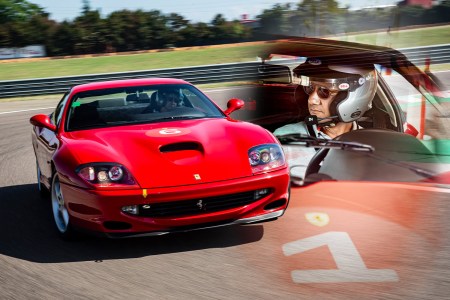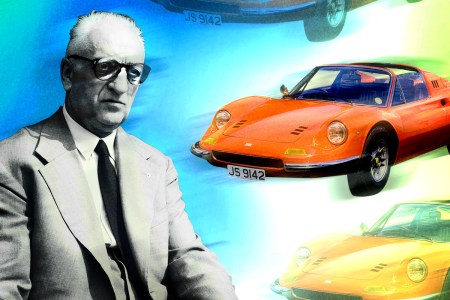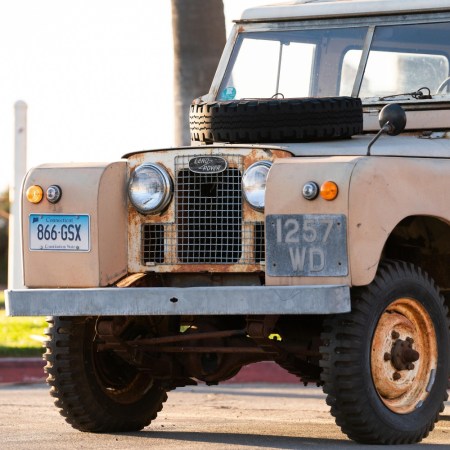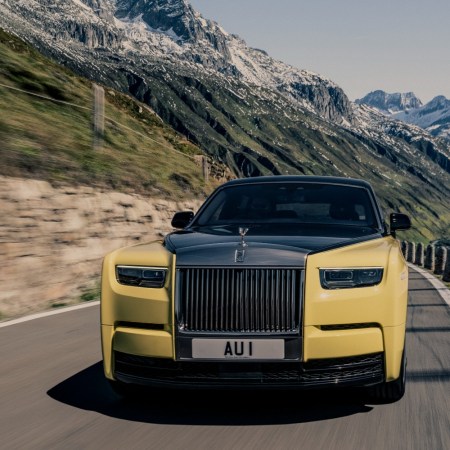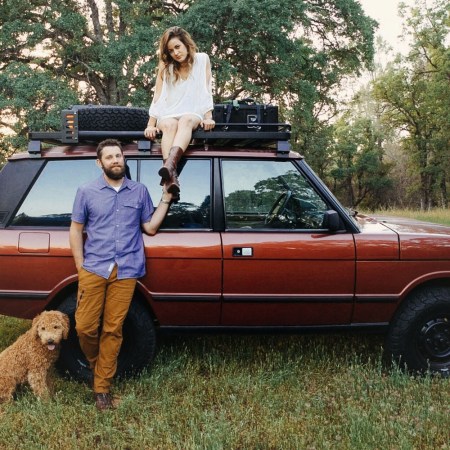The Classic Ferrari Collector’s Guide
A decade-by-decade look at the Prancing Horse's sports and touring cars, including underappreciated models to know and buying advice to follow
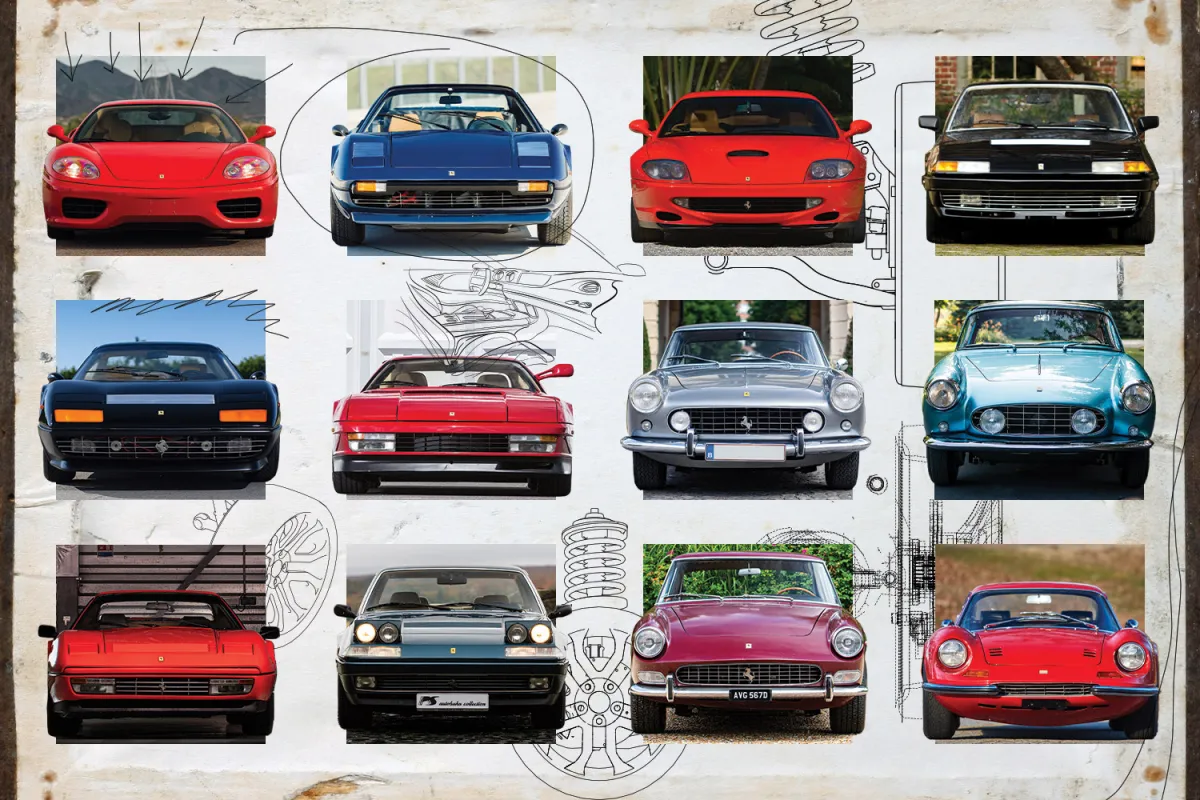
For many car lovers, owning any Ferrari is seen as the culmination of an automotive dream. For a more select group, reaching back into the brand’s illustrious past and getting hold of a classic car, rather than a modern Prancing Horse, is the most important goal. If you find yourself in the latter group, we’re here to help with our comprehensive Ferrari collector’s guide.
This buying guide to classic Ferrari vehicles spans six decades, from 1948 to 1999, and will help you navigate the potential purchase of not only the most iconic models from Modena, but also their underappreciated and undervalued sports and touring cars.
For those insights, as well as advice on what to expect from the ownership experience of these high-end vintage cars, we spoke with Brian Rabold, vice president of Automotive Intelligence at Hagerty, and Eric Y. Minoff, vice president, senior specialist director in the Motoring Department at auction house Bonhams. Whether you’re finally ready to take the plunge on your first Ferrari or already have a healthy stable, their expert opinion on the ins and outs of the classic Ferrari collector’s market will help you go from online browsing to pedal mashing.
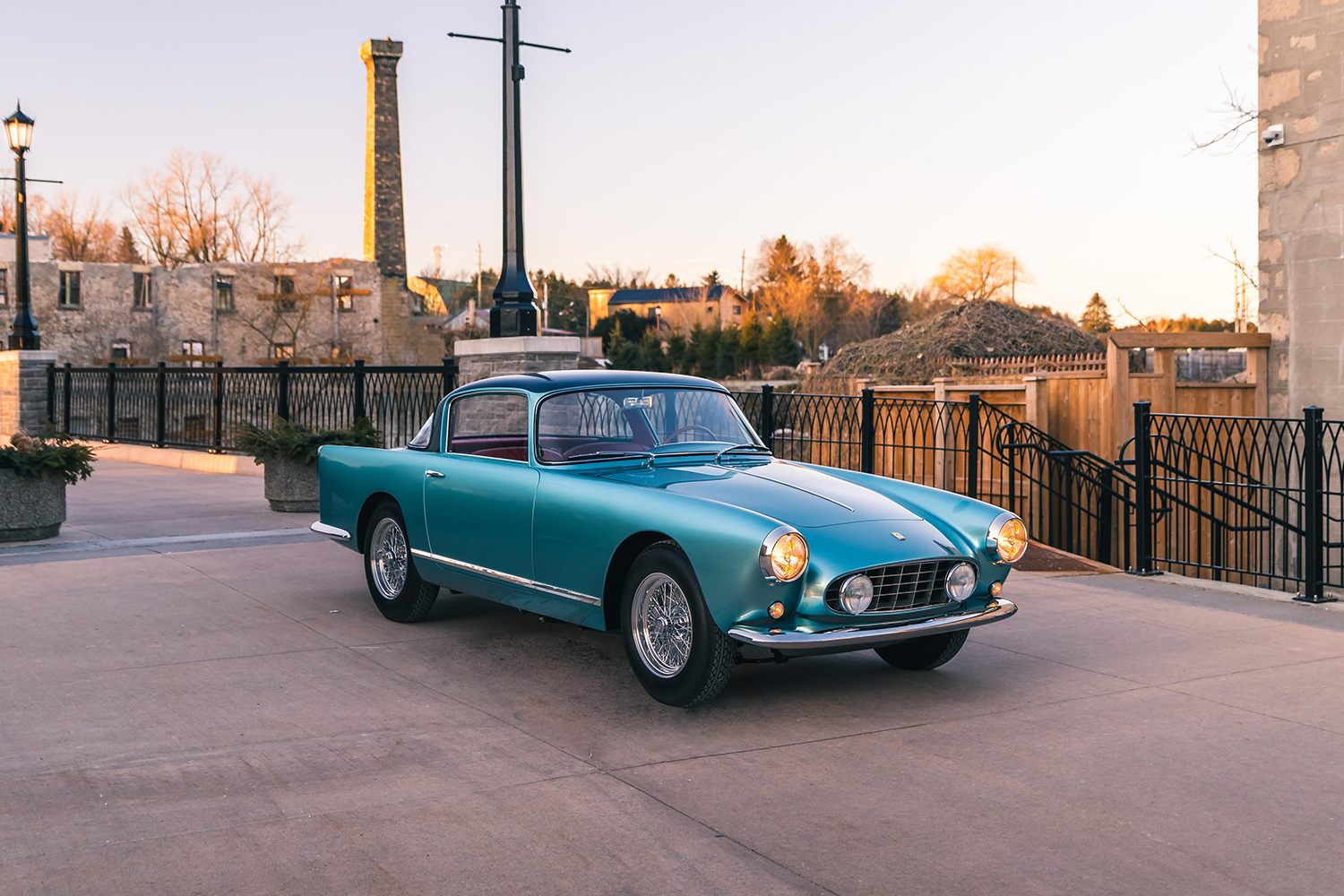
1948-1959
After decades of racing, Enzo Ferrari’s first road cars arrived at the end of the 1940s. They set the tone for what was to become a classic template for the brand’s first quarter-century: a front-engine, 12-cylinder layout, split between high-performance sports coupes and fast, but more practical grand touring cars. That V12 motor, designed by Gioachino Colombo, would last even longer, with derivatives of the original design powering Ferraris until nearly the 1990s.
“The market for early cars is surprisingly healthy. I say ‘surprisingly’ because a lot of people think more about modern Ferraris so they don’t really go back that far,” explains Brian Rabold. “These are really special cars that are incredibly rare. When we talk about rarity in the Ferrari world, nowadays that might mean a few thousand units, but back then you’re talking about production runs in the hundreds. There’s a very limited supply.”
The giants of this era include models like the 250, which spawned both road and race editions, and which is perhaps most famous in the popular consciousness for the starring role played by a short-wheelbase 250 GT California Spyder in the movie Ferris Bueller’s Day Off. Blessed with gorgeous open-air bodywork and a competition-sourced drivetrain, the California Spyder’s most coveted on-track sibling was the 250 Testa Rossa, which boasted an impressive win record well into the following decade.
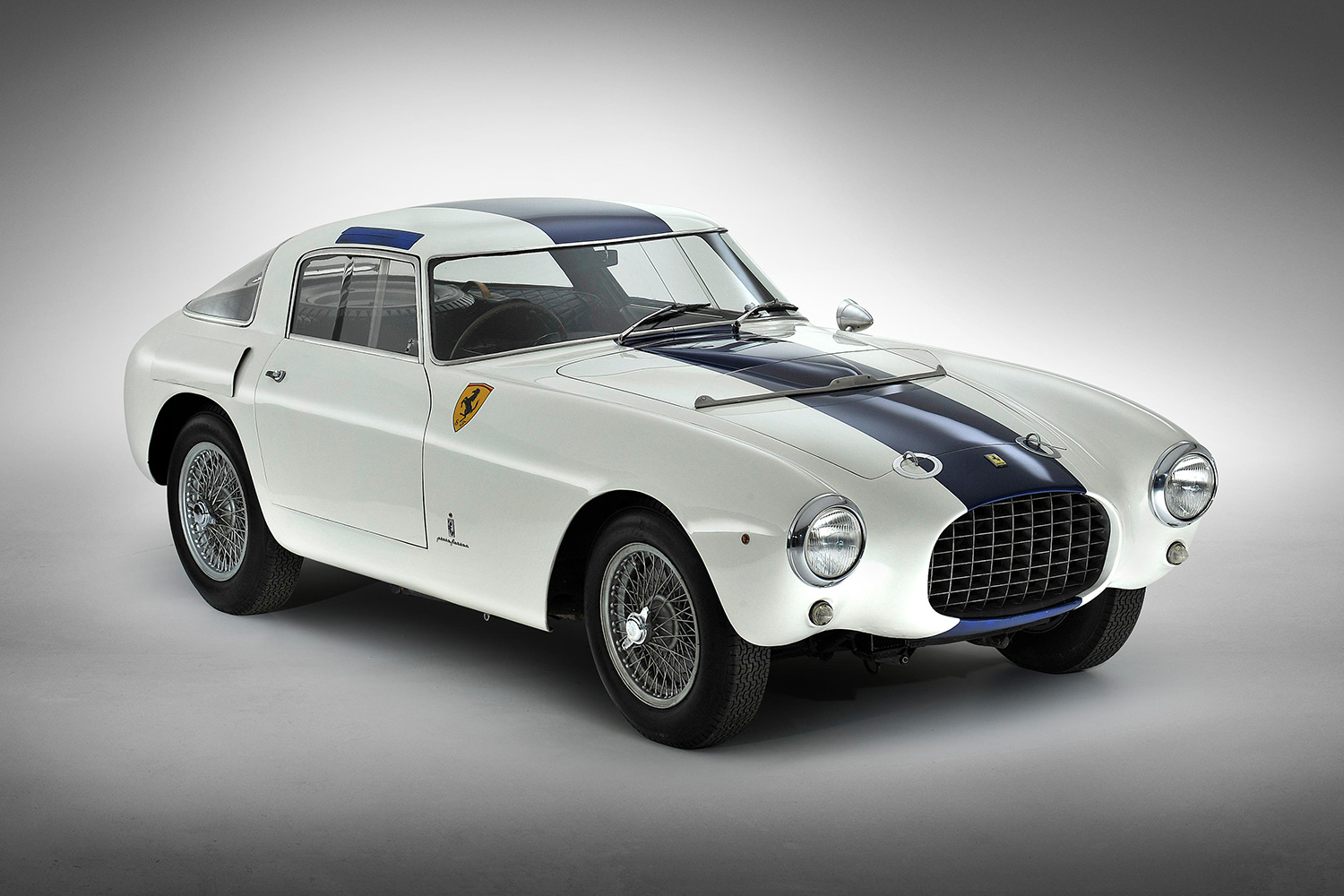
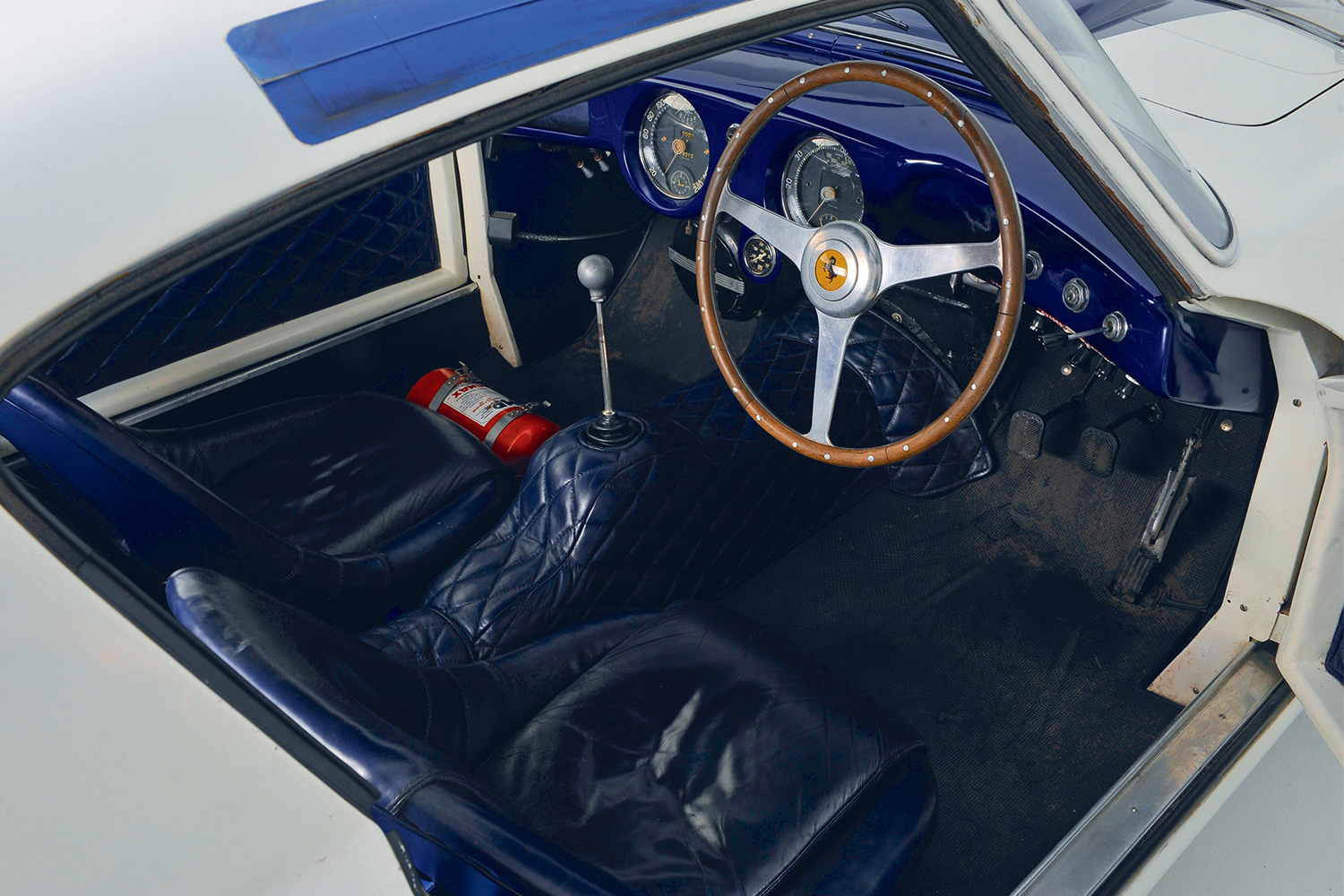
“One of the coolest things about this era of Ferrari is that they are a totally different experience [from a modern car], and they open the door to a lot of opportunities, including [heritage] tours like the Mille Miglia,” says Rabold.
Prices for early Ferraris have remained remarkably stable, especially given the surges and flux seen in other areas of the collector car market during the pandemic. Still, given how uncommon any Prancing Horse of this era is, expect to spend considerable sums to park one in your climate-controlled garage. Legendary nameplates of course come with legendary prices, with the California fetching $12 million for a top-tier example, while the ultra-rare Testa Rossa can go as high as $46 million. Grand touring cars like the 375 America and the 410 Superamerica, however, can be had for less than $3 million.
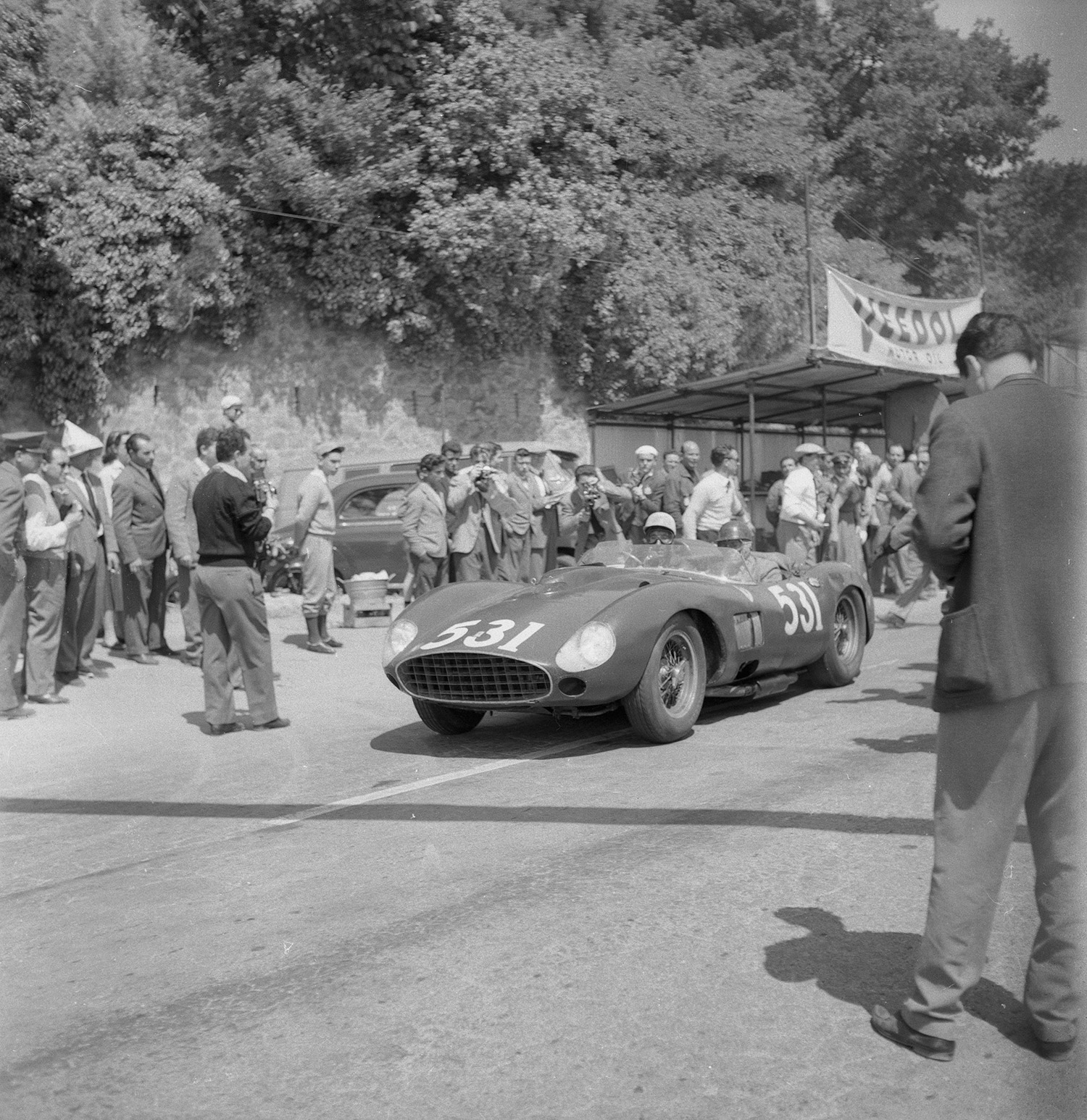
Ferrari 335 S Scaglietti
The 335 S is notorious for its role in a terrible crash at the Mille Miglia in 1957, caused by a tire blowout that saw one of the Ferraris leave the track and slide into a crowd of spectators, leading to a charge of manslaughter against Enzo Ferrari (which was later cleared), and the transformation of the Miglia from full-on race on public roads to a less-frenetic rally.
The surviving 335 S examples are better known for their gorgeous sheet metal and for setting records at auction for classic race cars. In 2016, one such model driven by Peter Collins and Stirling Moss sold for $35.7 million at auction. Only four were ever built.
A Day at Corso Pilota Classiche, Ferrari’s Classic Driving School
The instructional program, hosted at the Fiorano Circuit in Italy, grants access to some of the sexiest sports cars in their archive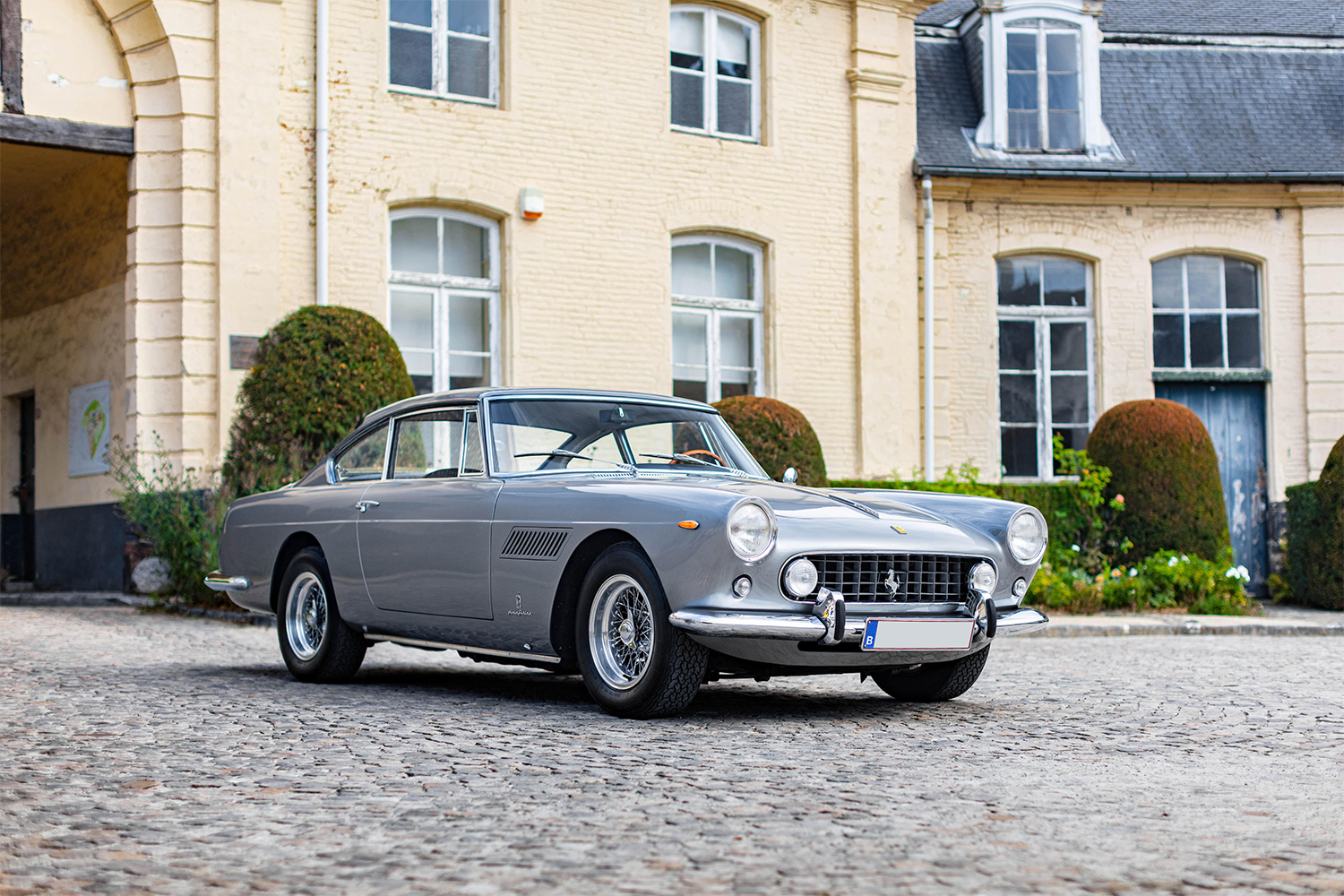
1960-1969
While the first decade or so of Ferrari production is occasionally overlooked by collectors, the period that immediately followed is one of its hottest hunting grounds. There are several reasons why Ferraris from the 1960s attract so much attention. For starters, Enzo’s motorsports exploits became much better known on a global scale during this time. That coincided with some of the most inspired styling ever to leave the automaker’s Maranello headquarters, including absolute stunners like the 250 GTO and the ahead-of-its-time, Pininfarina-penned 365 GTB/4 (also known as the Daytona), two models that bookended the company’s decade.
Then there was the Dino 206 GT, Ferrari’s first foray into the kind of mid-engine design that would eventually define its highest performance models into the modern era. Named after Enzo Ferrari’s son Alfredo (who had originally created the car’s V6 motor for Formula 1 competition the previous decade), it was not only the first street-legal Ferrari to feature fewer than 12 cylinders, but also the lead car in what was originally intended to be a sub-brand produced in partnership with Fiat.
After decades of being snubbed by purists who rolled their eyes at the Dino’s unusual cylinder count, Fiat connection and early advertising campaigns that referred to the coupe as “almost a Ferrari,” the one-time affordable model has in recent years been completely rehabilitated in the eyes of collectors. Recognition of its excellent driving manners and its importance as a symbol of Ferrari’s ‘60s innovation have pushed prices up considerably, with early cars selling for as much as $825,000.
The 250 GTO is one of the most expensive classic road cars, with a concours example pegged at $72 million. Even the 365 GTB/4 is a well-established leading light with a price tag of around $1.5 million. That doesn’t mean that there aren’t a number of intriguing, more earth-bound entry-points for those looking to snag their own slice of 1960s Ferrari action.
“In the Ferrari landscape, if one is willing to accept a set of seats behind them, useless or not, you are in for a huge amount of savings,” says Eric Y. Minoff. “Every Ferrari 2+2 is a good value, especially when you consider what it costs relative to a two-seat version of a similar vehicle.”
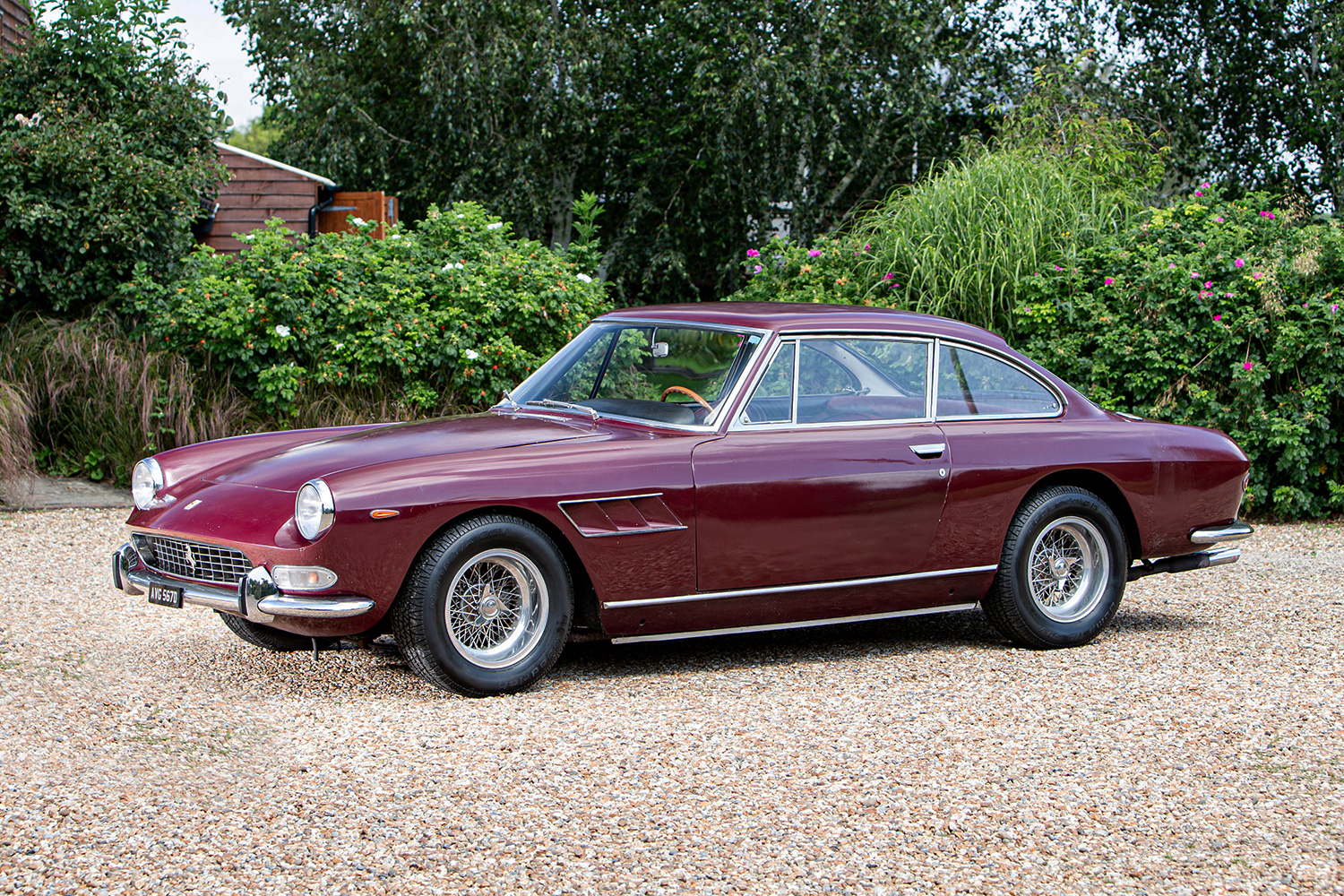
When looking at 1960s Ferraris, Minoff points to models like the 250 GTE and the 330 GT, whose rear seats put them in a much more affordable price bracket. “The latter, for example, trades in the $200,000 to $300,000 range — a significant savings versus their two-passenger siblings, which often share similar running gear.”
“Compare that to a 330 GTC, for example, which is going to run you almost $500,000 for just a driver-quality car, and between $600,000 and $700,000 for a really nice one,” he adds. “You’re getting a lot of the same car. Mechanically, they are the same.”
Rabold is in agreement concerning what 2+2 cars bring to the table.
“The ones that stand out to me are the 330 and the 365 GTC/4. The latter is a very popular car in a lot of collectors’ collections…specifically Ferrari fans with extensive experience behind the wheel who find the 365 very enjoyable to drive.”
Minoff underscores how well the 365 GTC/4 fits into modern life for owners who plan to drive their vintage Ferrari.
“Everyone I know that has one, [they] love them, and think they’re phenomenal to drive. They’re big by vintage Ferrari standards, which means that you can actually fit two adults in the front and two adults in the back, and you can sit real luggage or even golf bags in the back if you wanted to go on a trip. It’s got power windows and AC and heat and all the luxuries one would expect, and it has a great noise from a big Ferrari V12 with a bunch of carburetors on it.” All this from a car that can be had at around the $200,000 mark.
Color Matters
“The best way to save money on a Ferrari is to buy a red one,” says Minoff. “It’s the least desirable color if you’re looking at value. A lot of people order Ferraris in red, so there are many examples available in that hue. The reality of supply and demand means if you’re looking for a special color, you’ll pay extra for that privilege. In terms of repaints on a classic, if the original color was boring, then repainting it a more interesting shade won’t knock the value down, but at the same time there’s no guarantee that it will increase it, either. You’d need to find a buyer looking for that specific color, and color trends can change quickly in terms of what’s sought after by collectors.”
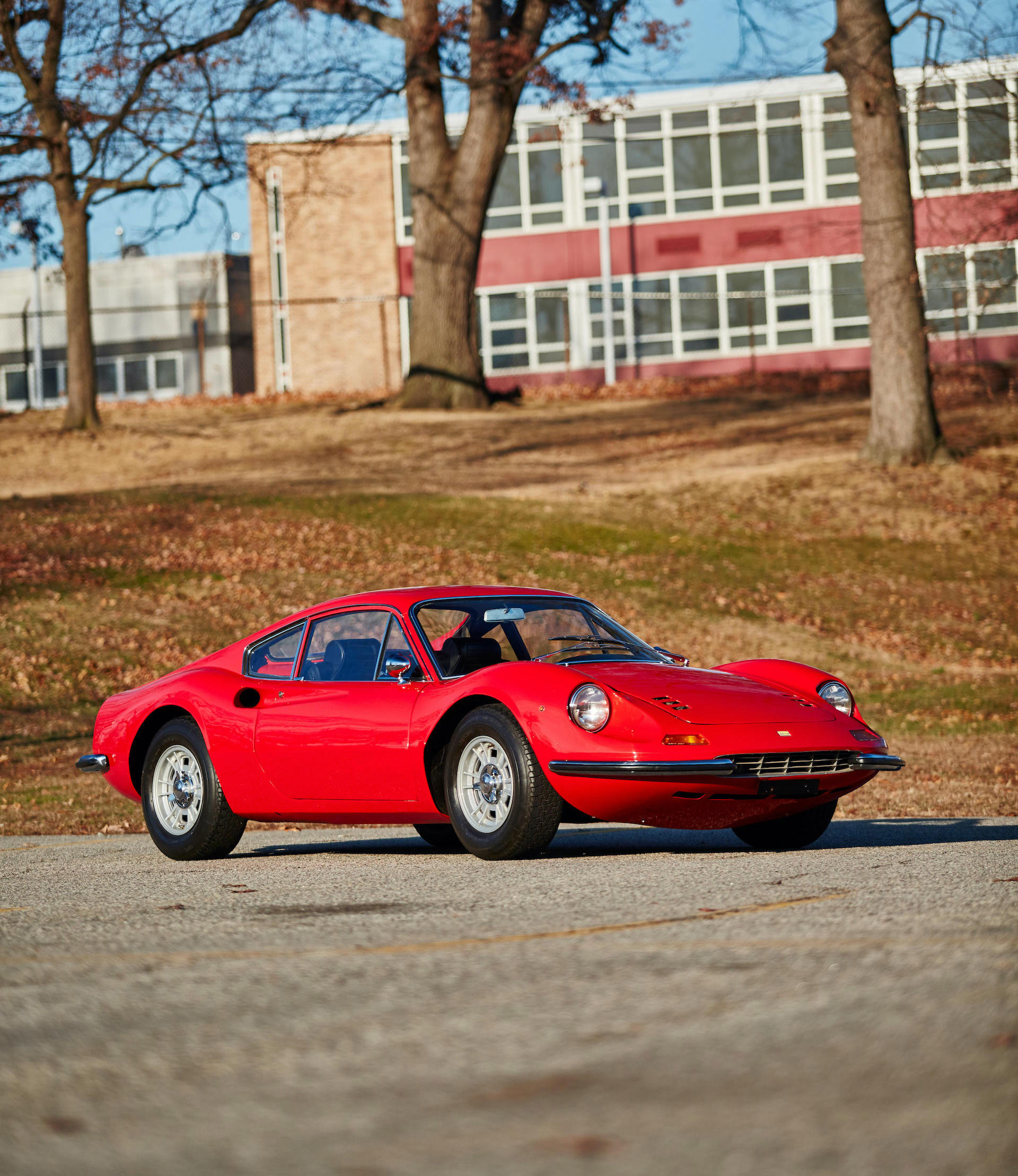
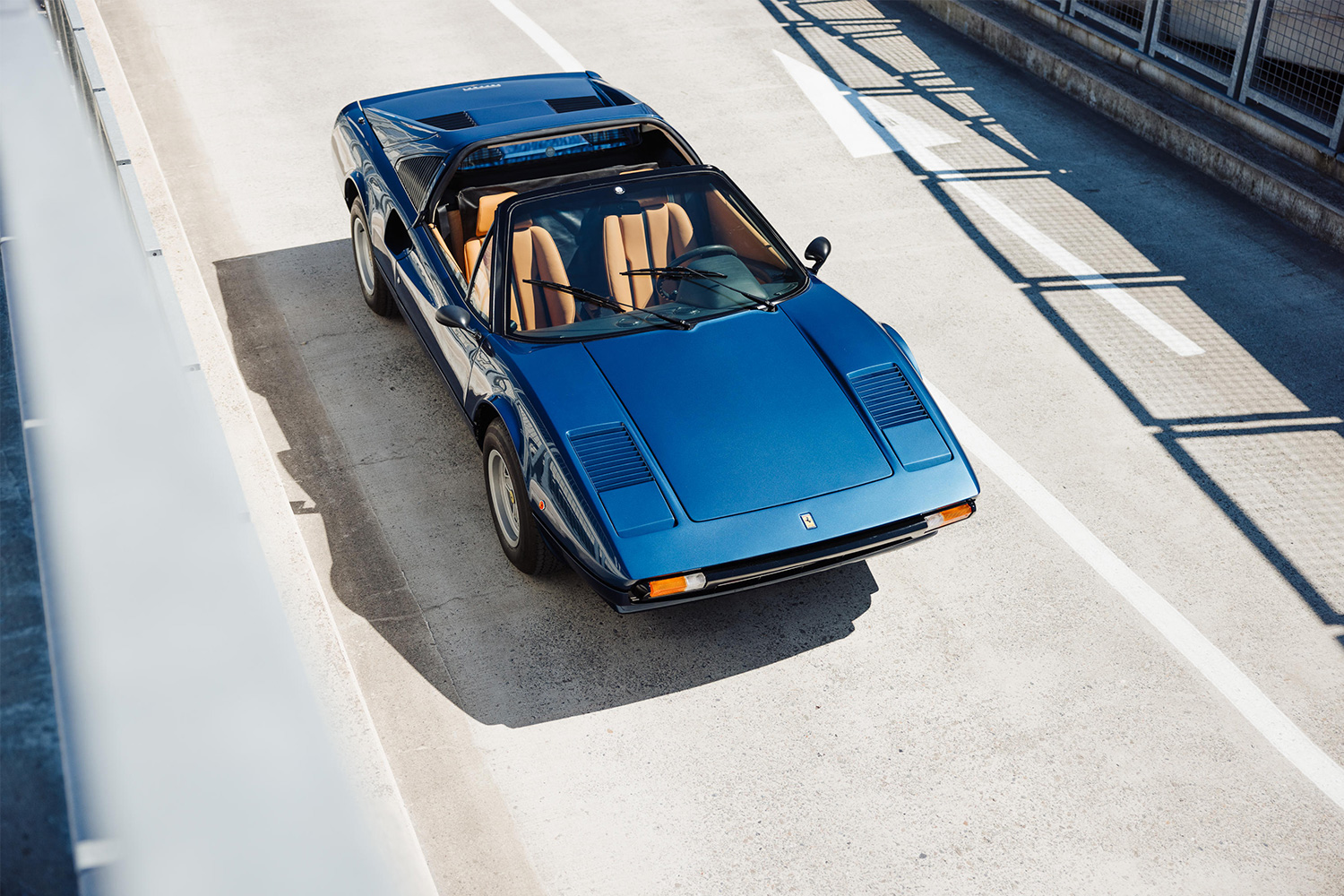
1970-1979
The world of exotic automobiles had greatly expanded by the time the 1970s rolled around. Models like the Lamborghini Countach and the Porsche 930 pushed performance and spectacle in new and exaggerated directions, aided and abetted by increasingly high-tech drivetrains and materials.
Into this environment stepped a Ferrari willing to embrace the future. Although models like the Dino and the Daytona (and their descendants) remained in the mix for much of the decade, it was also a time to shake off some of the rigid boundaries that had defined the marque’s design to that point.
First and foremost was the move to mid-engine machinery on a larger scale. The car that replaced the Dino, the Ferrari Berlinetta Boxer, featured a flat-12 engine instead of the company’s traditional V12. What’s more, the “BB” also brought a more extreme wedge-shaped styling language into Ferrari showrooms, sparking a trend that would carry on throughout the decade.
“The [BB] 512 hasn’t really moved in value over the last six to eight years,” says Minoff. “They’re a flat-12 Ferrari, but they’re not ‘the’ flat-12 Ferrari, because that’s the [later] Testarossa. It’s a cool car, and it’s the last hand panel-beaten Ferrari. But value-wise, you can still get them in the upper-$100,000 to low-$200,000 range. Prices are double what they were 15 years ago, but especially the later BBi fuel-injected models have seen their prices flatten while every other sports car [of their era] soared.”
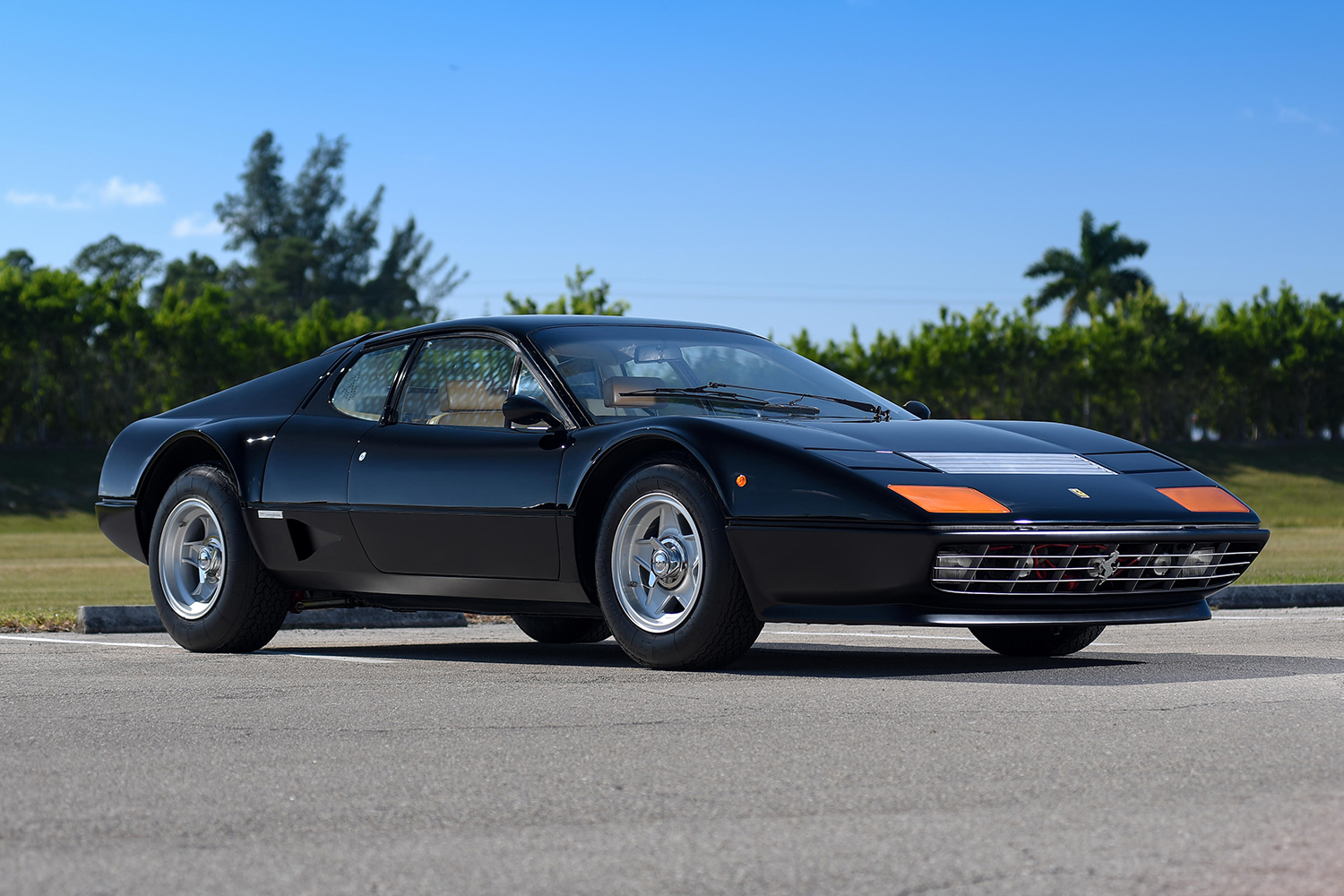
The 1970s are also notable for what was once the “bargain” collector Ferrari, the eight-cylinder 308 GTS, which arrived shortly after the 512 hit the scene. The 308 endured its status as the star of Magnum, P.I. for many years before finally seeing values rise.
“This is true even for the anemic, 205-horsepower models that followed in the early ‘80s,” says Minoff. “The 308 is not a $25,000 car anymore.” Expect to pay between $64,000 and $150,000 for a well-sorted 308 GTS.
On the 2+2 side of the 1970s, collectors looking to sample a 12-cylinder Ferrari at a discount will be delighted to discover that the 400 GT remains an exceptional value. A top-quality example commands a $62,000 price, an absolute bargain considering the car’s gorgeous angles and excellent drive. It’s also considerably less expensive than the decade’s other Ferrari 2+2, the mid-engine, V8-powered Dino 308 GT4, which will cost collectors roughly double. The 400 GT arrived in 1976 and replaced the previously-mentioned 365 GTC, which was sold throughout the decade’s opening bracket.
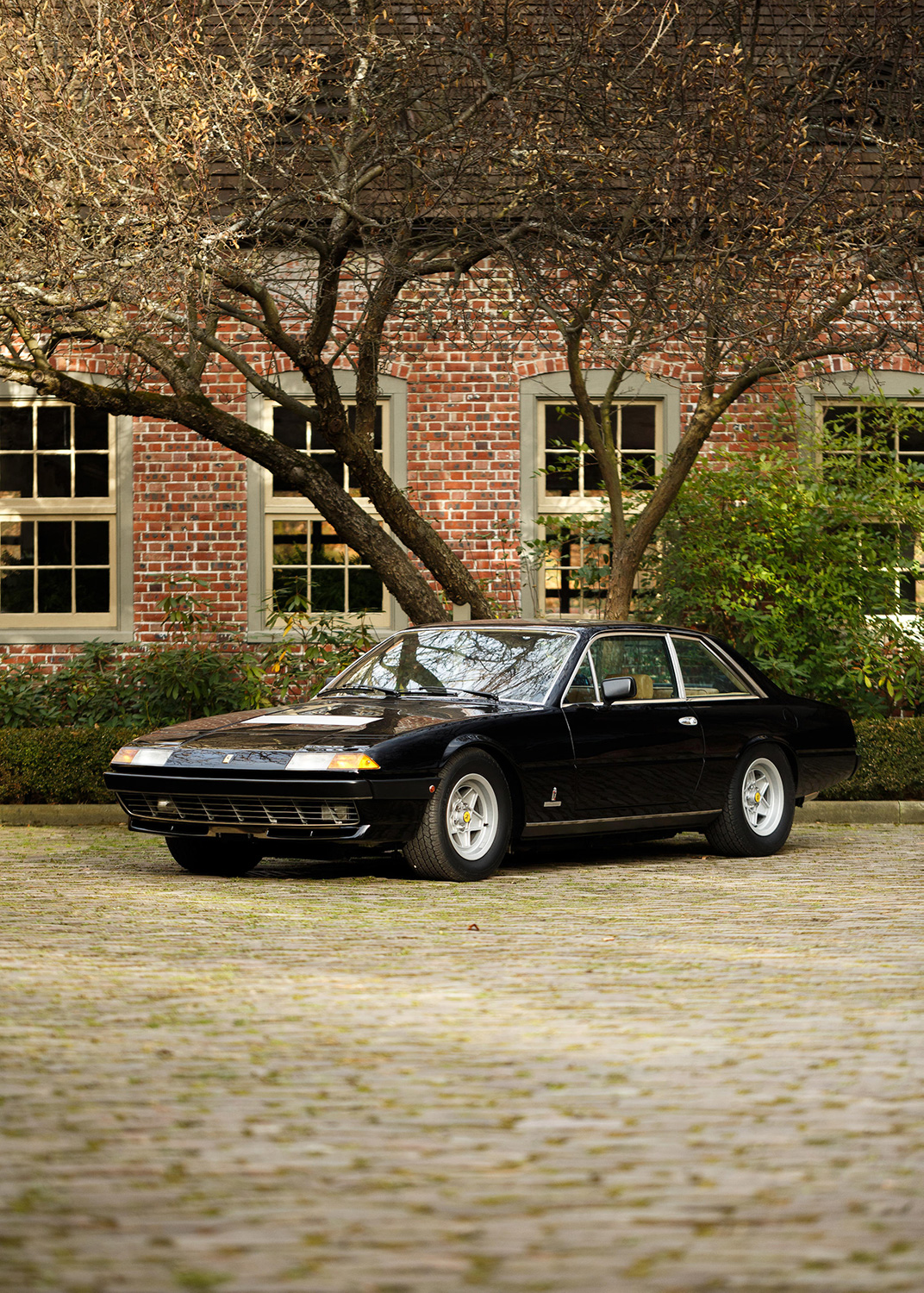
Buyer Beware: Maintenance, Maintenance, Maintenance
“I think no matter what, when you’re buying a Ferrari, you have to focus on the service history, the ownership history,” says Rabold. “I would make sure that whenever somebody’s getting into a car, they do some research about what the maintenance costs are, what the maintenance schedules are, make sure that there’s paperwork documenting it, all that sort of stuff. That’s not the fun part of owning a car, and people can be surprised really quickly when they realize that they just bought this very low miles car that hasn’t been serviced recently. That can be very, very expensive.”
“With a Ferrari, regardless of what it is worth on the secondhand market and how much it might have dropped from its original purchase price, the cost of maintaining them does not change,” adds Minoff. “You’re in for big bills. Cars like this are maintained like aircraft. It doesn’t matter how much you drive it, you’re going to spend the same amount of money maintaining it.”
Ferrari’s Dino Is the Ultimate Tribute From a Father to His Son
Revisiting the tragic backstory that sparked the company’s first mid-engine road car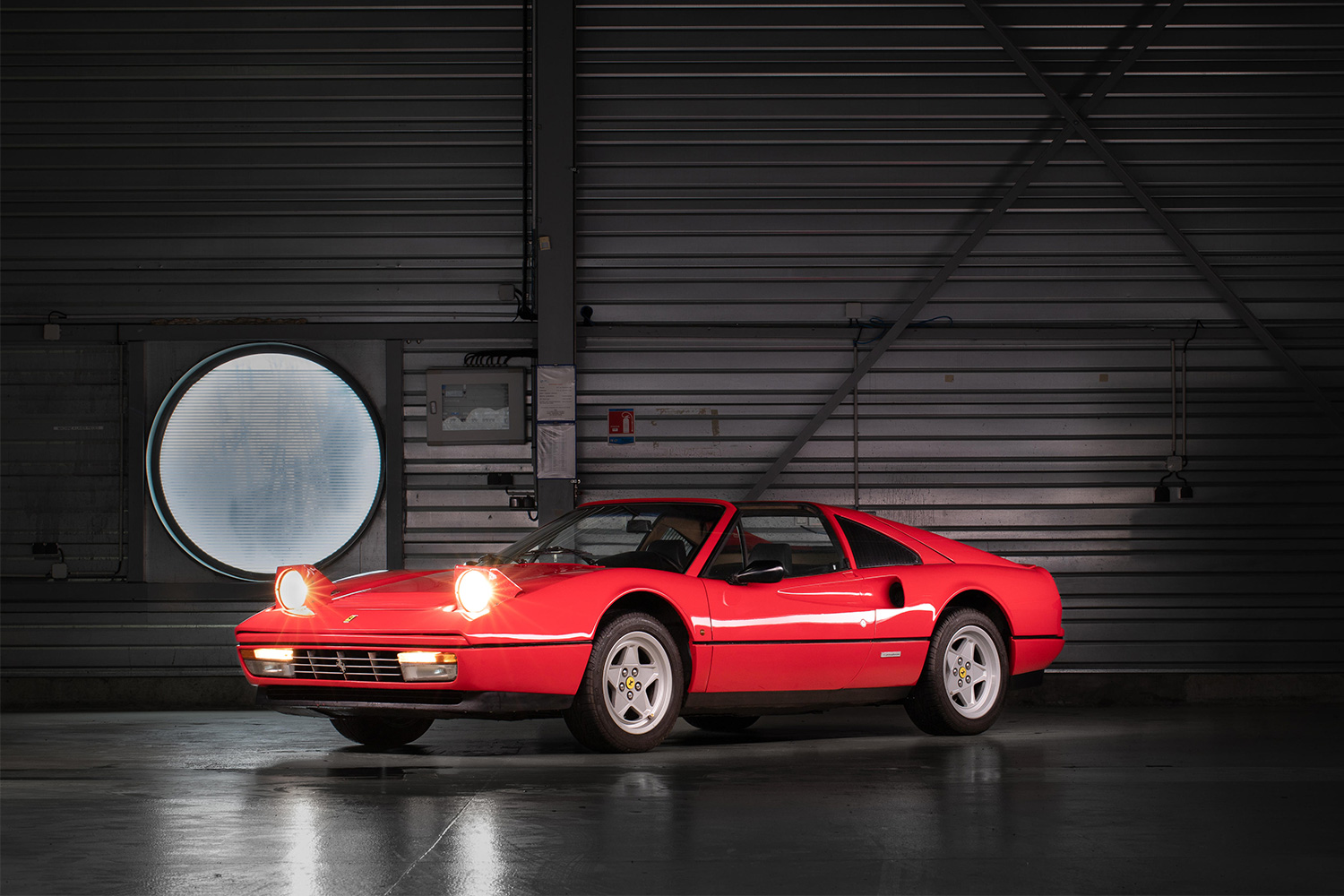
1980-1989
Ferrari enjoyed considerable status in the 1980s as the “greed is good” decade pushed conspicuous consumption to new levels. This is the time period where the automaker’s design and engineering acumen reached a never-before-seen apex that allowed for the production of supercars like the F40 and the 288 GTO, barely disguised race cars for the street. Those two models now each sell for between $3 million and $4 million dollars in top-tier condition, making them by far the most expensive 1980s Ferraris to collect. That doesn’t mean there aren’t other interesting machines bearing the Prancing Horse badge to consider from this decade.
The 400i evolved into the 412i starting in 1980, and continued to present strong value for those seeking a Ferrari with a back seat, topping out around $80,000. Even more affordable is the Mondial, another 2+2 grand touring car only this time with a mid-mounted V8 instead of a front-placement V12. Expect to pay under $40,000 for nice, early cars, with convertibles also available.
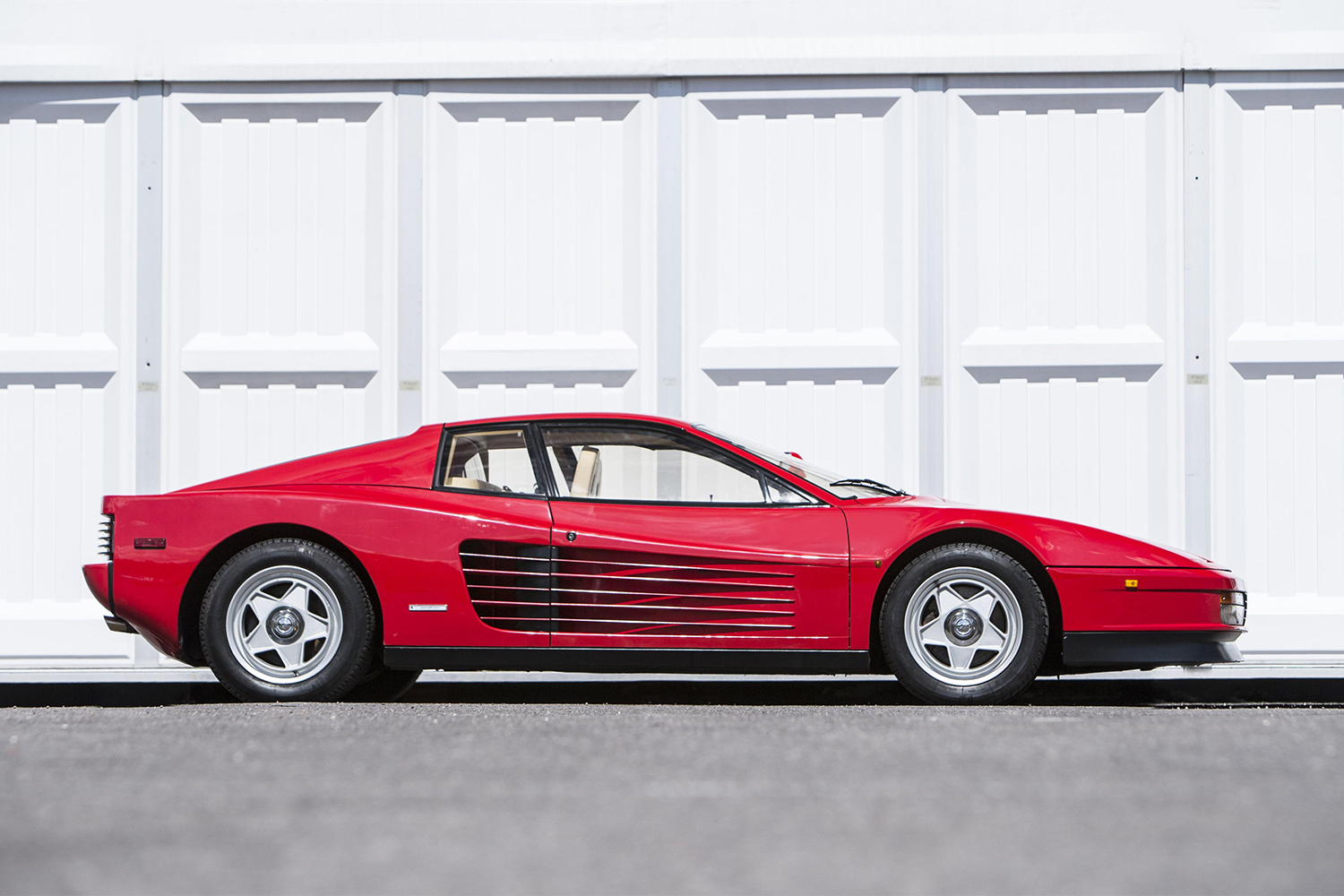
The 308 GTS/GTB was another ‘70s holdover that enjoyed ‘80s success, eventually being replaced by the similar 328 GTS/GTB. Although not the most powerful Ferraris of that decade, the 328 is especially lauded for being easier to maintain than most of its brethren.
Two outliers that present a midpoint in terms of performance and price are the 348 and the Testarossa. The poorly received 348 was an evolution of the mid-engine V8 Ferrari template that is often overlooked due to the car that succeeded it — with arguably better execution — the following decade, keeping prices capped in the $100,000 to $120,000 range for the first model year. The Testarossa changes hands for up to three times that amount, and has more extroverted looks and four more cylinders hanging out behind the driver’s head.
The Bubble
Anyone who’s been in the Ferrari collectors’ world since the 1980s remembers The Bubble, the fantastic run-up in pricing surrounding nearly every model from the brand. Several factors colluded to push Ferrari values past the point of reason. First, there were the overenthusiastic dealers preaching to a choir of I-want-to-believe buyers that it would be virtually impossible for them to lose money on what were seen as the best automotive “investments” of the decade. Then there was the stock market crash of 1987 that pushed wealth out of stocks and into hard assets like automobiles. Finally, there was Japan’s own Bubble Economy (based around soaring real estate values), which saw Ferraris new and old shipped across the Pacific at outrageous prices.
Things reached a fever pitch in 1988, and for two years Ferraris were the hottest ticket among the mega-wealthy. When the music stopped, however — at roughly the same time that Japan’s asset inflation bubble popped — speculators suddenly discovered there was no next person in line to buy their inventory at hyper-appreciated prices. In the dramatic crash that followed, even the rarest of Ferraris were available for a sliver of their previous purchase prices, with some models not recovering their value for nearly two decades.
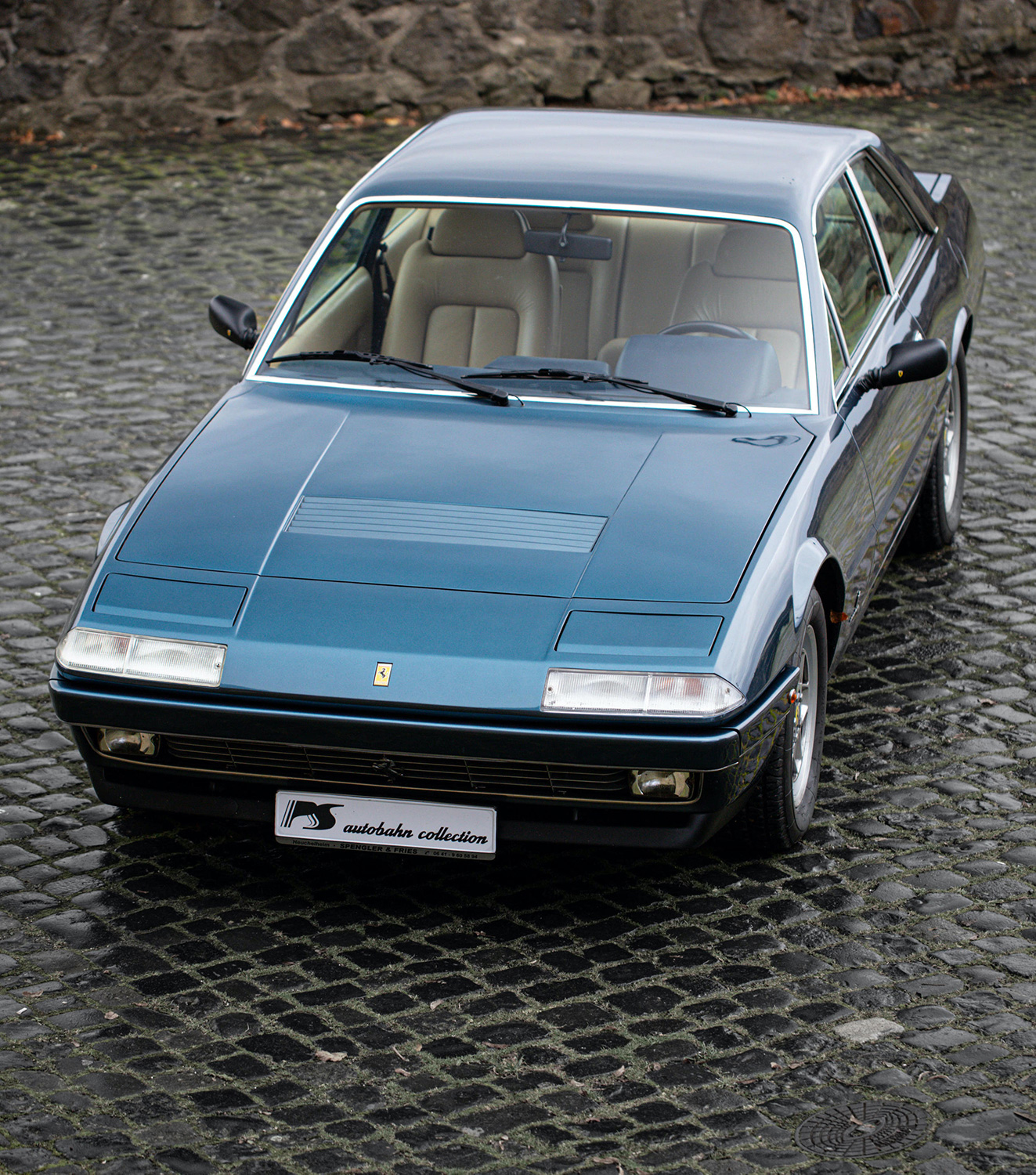
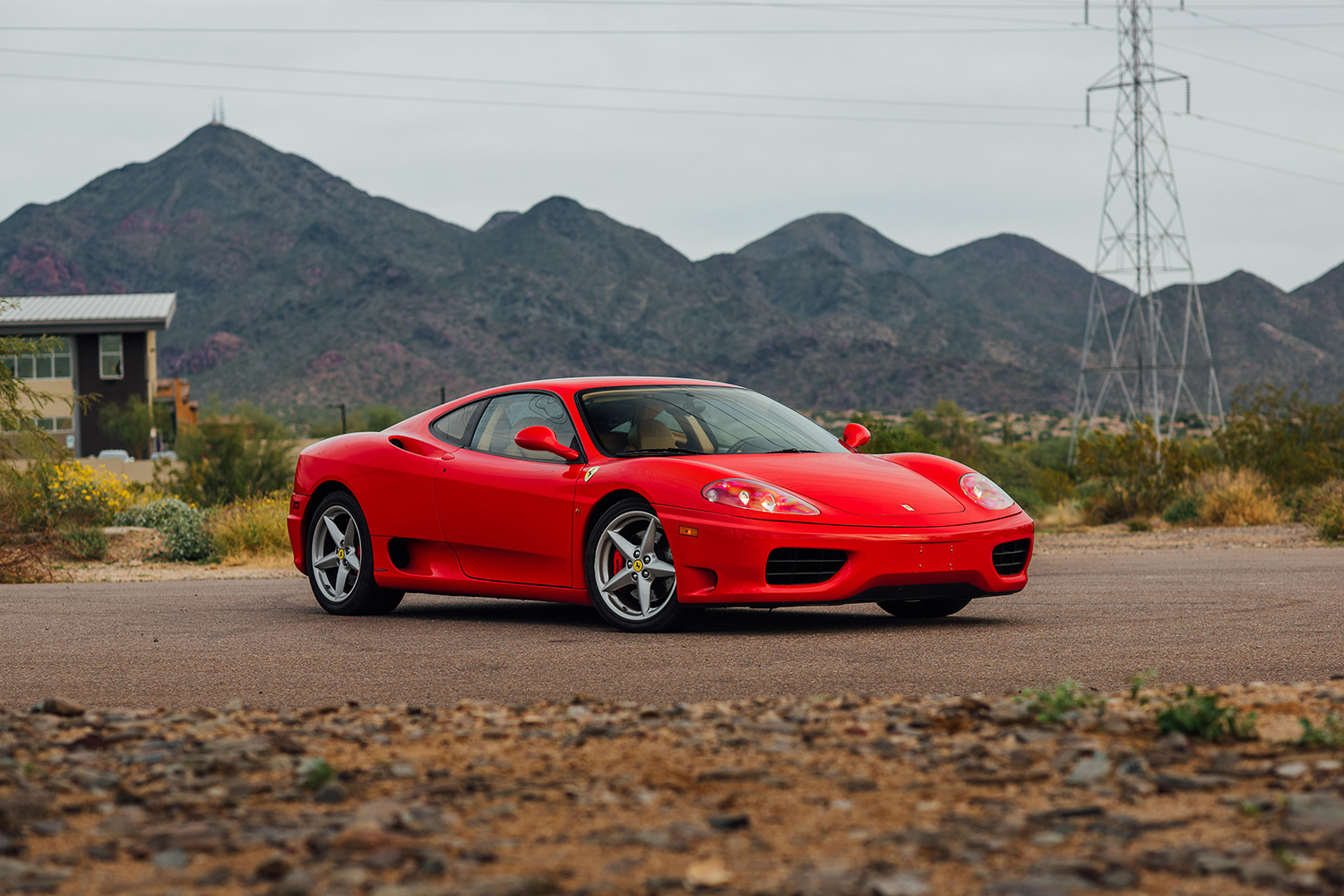
1990-1999
Ferrari continued to push the limits of what was possible in terms of performance and, even more importantly, reliability in the 1990s. For some, the decade is defined by the F50 supercar, a vehicle that did its best to translate Formula 1 to the street, and which commands over $5 million due to its prodigious speed and ultra-low production numbers.
The ‘90s are perhaps more interesting to collectors due to the presence of certain models that took some of the pain out of owning an Italian exotic. The 360 Modena coupe, a mid-engine V8 sports car that debuted at the end of the decade, not only showed off swooping curves rather than familiar Ferrari angles, but it was also much more comfortable on a day-to-day basis (and featured much lower maintenance costs), than the beautiful but finicky F355 that it replaced. The 360 is available for between $75,000 and $100,000, while the F355 (which was the popular successor to the 348) will run between two and three times those amounts.
The Testarossa continued production into the ‘90s (as did the 348), evolving into the 512 TR and the F512 M before being replaced by the much more modern, if less extroverted, 550 Maranello as the brand’s V12 touring car champion. In addition to its excellent reputation as a driver’s car, the Maranello erased many of the compromises associated with Testarossa ownership, with the caveat that the engine had shifted from the rear of the vehicle to the front. Valuations for the best examples of the 512 TR hover around the $425,000 mark, while the 550 Maranello is a much better value, topping out at less than $300,000.
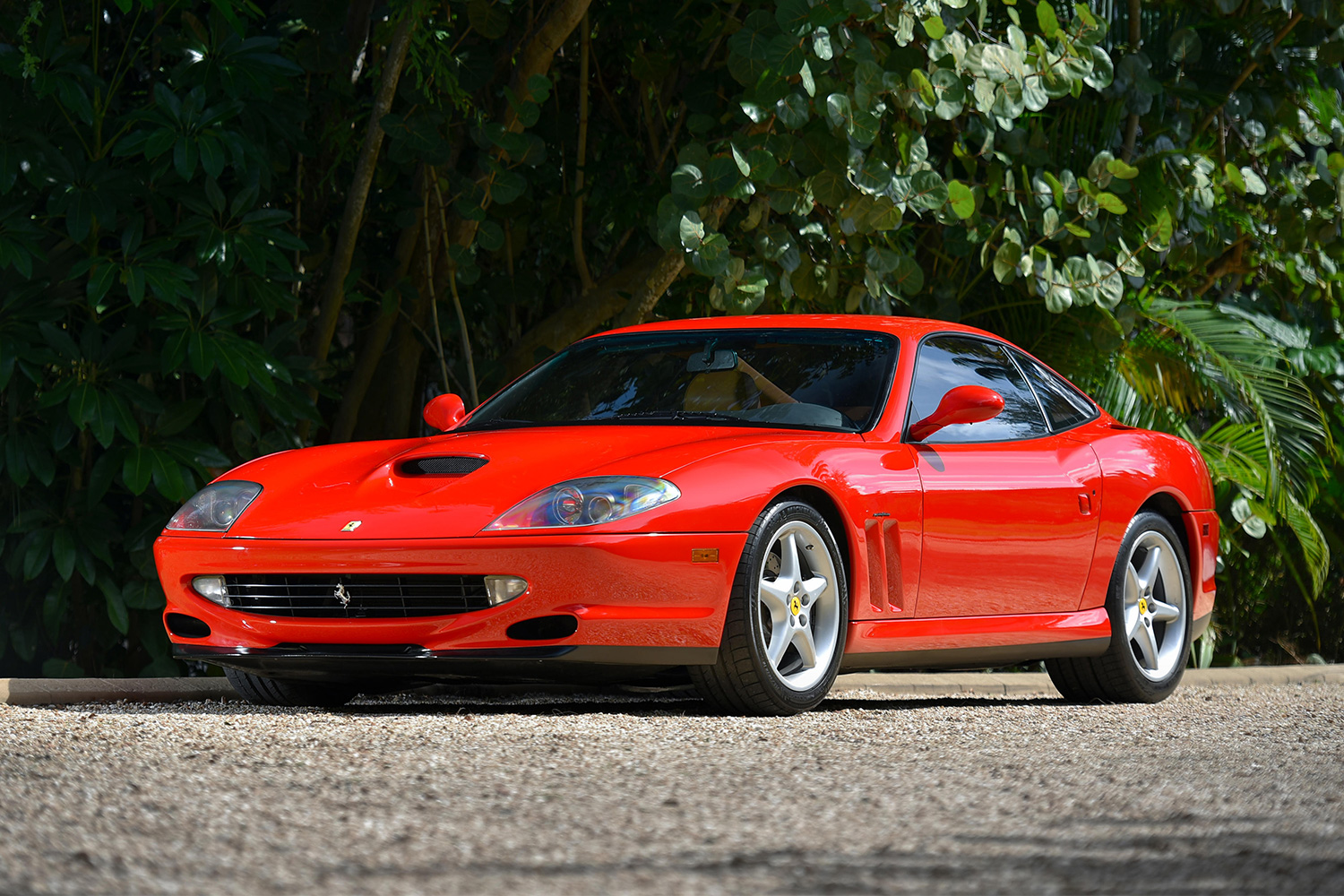
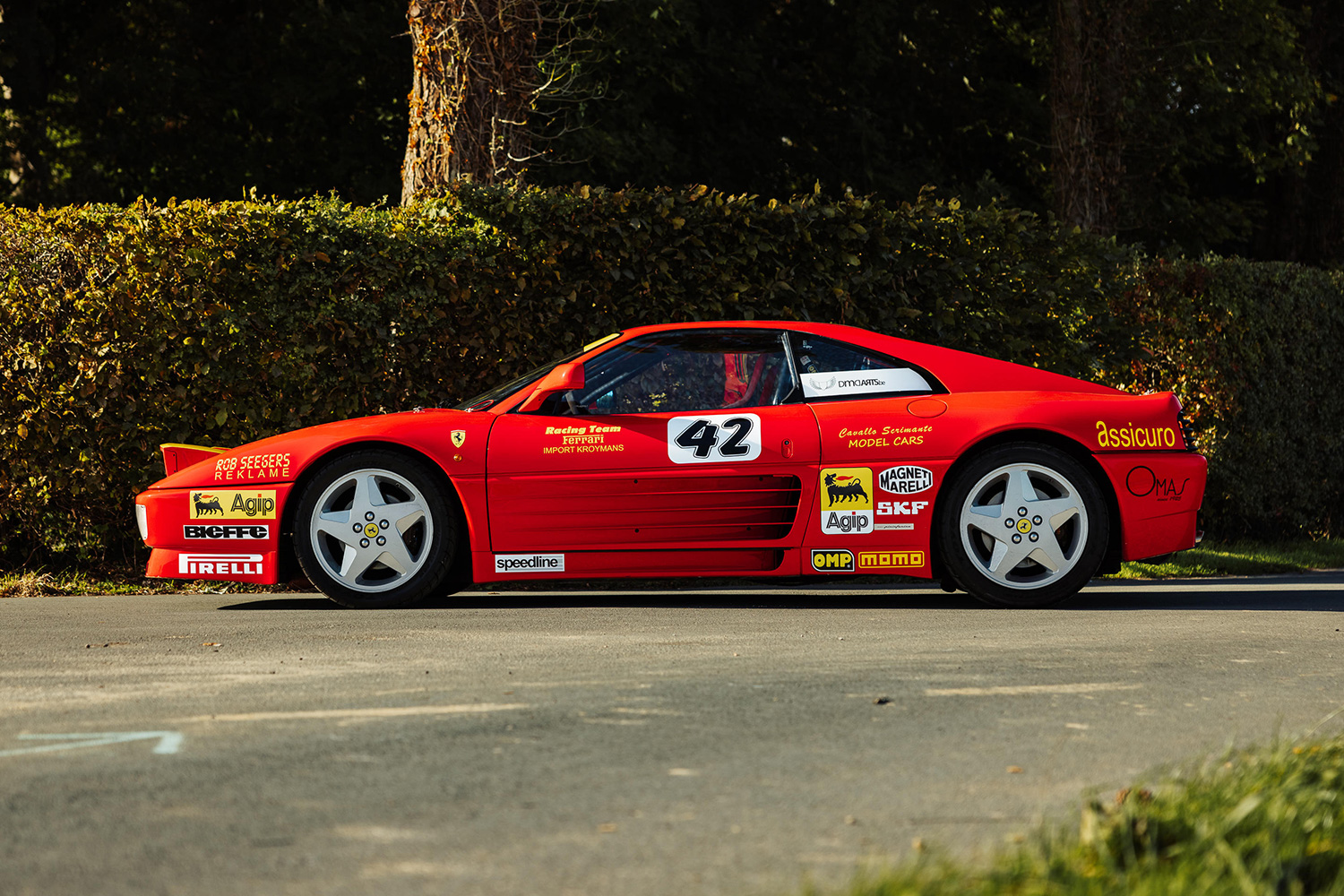
Starting in 1993, Ferrari built track-only versions of its sports cars to compete in its single-make Challenge series. Starting with the 348 and continuing all the way to today’s 488, it’s possible to find stripped-down Challenge editions of each of its popular mid-engine models. Keep in mind that owning one of these racers can present “challenges” of its own.
“Some of those Challenge cars, you can’t just have your local Ferrari shop service them because they don’t just have standard parts,” says Rabold. “There are also limitations in how they are able to be used. Pricing really comes down to the history of the car, and it’s really across the board.”
If you’re dead set on owning a car with a competition history and aren’t looking to spend millions to do it, then the Ferrari Challenge series of racers offers an intriguing alternative to the eye-watering price tags of classic competition models from the brand’s earlier era.
The Thrills and Disappointments of Classic Car Ownership
“If you look at any of those post-360-era Ferraris, they’re a bit underappreciated relative to the other cars that were being offered at that time,” says Minoff. “They’re great. You pay a significant premium for a stick, but there are even companies that are now converting flappy paddles [automated transmissions] to [manual] sticks. They’re stellar cars that you could drive as just cars. I mean, they’re plenty quick, they can get you in trouble. Are they as fast as a new car? No, but they give you that thrill of driving a Ferrari.”
“I think if you’re just coming into it, the best place to start is with newer cars, and that’s mainly because those cars will kind of match your expectations,” agrees Rabold. “I think a lot of people don’t appreciate that old cars aren’t easy to live with, and they don’t appreciate how far engineering has come. If you’re driving a car that’s 50 years old, that was one of the high-performance cars of the era, it’s a different experience than what you might expect, and so without having that understanding it can be disappointing for people.”
Thanks for reading InsideHook.
Sign up for our daily newsletter to get more stories just like this.
